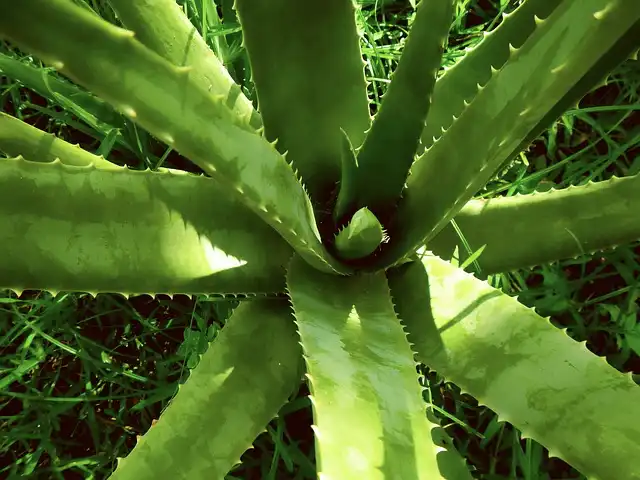Aloe vera is a well-known plant species from the genus Aloe used throughout the globe in wide range of products from creams and soaps to drinks and over-the-counter products. The genus Aloe has been used in traditional medicine for centuries, and approximately 20% of the species are used locally in the regions they grow.
However, it is only aloe vera and a small handful of other Aloe species, that are used commercially outside their native regions. All aloes are succulents—leaf succulents, to be specific—which means they belong to a group of plants that are particularly good at retaining and controlling their flow of water. In aloes, water is stored in a particular tissue called the hydrenchyma, situated in the center of the leaves. It is this tissue that is used both directly and in products to treat sunburns, for example.
Researchers from the Natural History Museum of Denmark, GLOBE Institute and the Department of Plant- and Environmental Sciences at the University of Copenhagen have in collaboration with researchers from Royal Botanic Gardens Kew and Newcastle University in England investigated the polysaccharide composition of the hydrenchyma in 93 different species of aloe. They have done so to get a better understanding of the connection between the polysaccharides, the medicinal use of the plants, the phylogeny, growth form, distribution, leaf morphology etc.
The investigations have shown that the polysaccharide composition of the succulent tissue of aloes primarily can be correlated to their growth form and leaf morphology. In other words, if an aloe species belongs to the group of stemless aloes with leaves in a rosette (like aloe vera), then the polysaccharide composition of their succulent tissue will likely resemble other species that look similar. The results of their study have just been published in the journal Plants, People, Planet.
“Our results show that the polysaccharide composition of the succulent tissue in aloes are closely related to their growth form and leaf morphology, which makes good sense from a biological point of view. At the same time they also show that the polysaccharide compositions cannot be correlated with the medicinal use, the phylogeny or the distribution of the species, which means that there is potentially a lot of other Aloe species that could be used instead of Aloe vera,” says postdoc Louise Isager Ahl.
Building blocks
Complex sugars or polysaccharides are the building blocks used to create the cell wall in plants, and the composition and construction of them varies depending on species, part (e.g., stem or leaf) or tissue that is investigated. As plants are stationary, their cell walls have evolved a plasticity that enables them to alter their polysaccharide composition to a greater or lesser extent depending on external stimuli like drought. The polysaccharide composition is crucial for tissue properties and ability to adapt to changes in the plant’s immediate environment.
Unfortunately, we do not know the polysaccharide composition of most the worlds’ plant species, since polysaccharides are the most complex chemicals found in nature. To have polysaccharide profiles for 93 species in one genus for further research is therefore extremely valuable in regard to our understanding of how plant species are constructed and how they are affected by environmental changes.
“To have such an in-depth description of one specific tissue across a genus gives us the ability to further investigate the adaptation, that succulence is, in much more detail than we previously have been able to. The collaboration between botanists and polysaccharide chemists in this project has given us a much better understanding of the correlation between these sugars in relation to a multitude of parameters,” says postdoc Louise Isager Ahl.
Read the paper: Plants, People, Planet
Article source: University of Copenhagen via Phys.org
Image: Aloe vera plant. Credit: Ernesto Rodriguez / Pixabay






